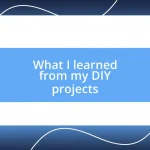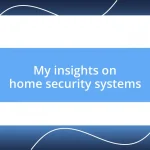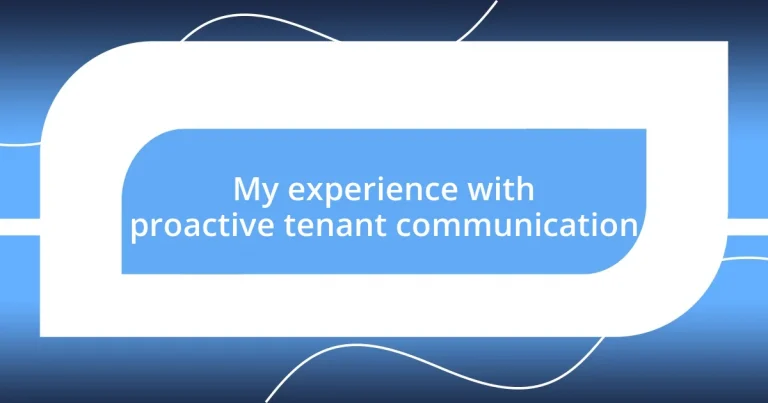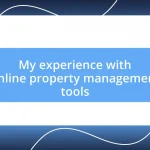Key takeaways:
- Effective tenant communication fosters trust, prevents issues from escalating, and can significantly enhance the tenant experience.
- Building a proactive communication strategy involves regular updates, seeking feedback, and adding personal touches to strengthen relationships.
- Measuring communication success through response rates, surveys, and informal check-ins provides valuable insights to improve engagement and adapt to tenant preferences.
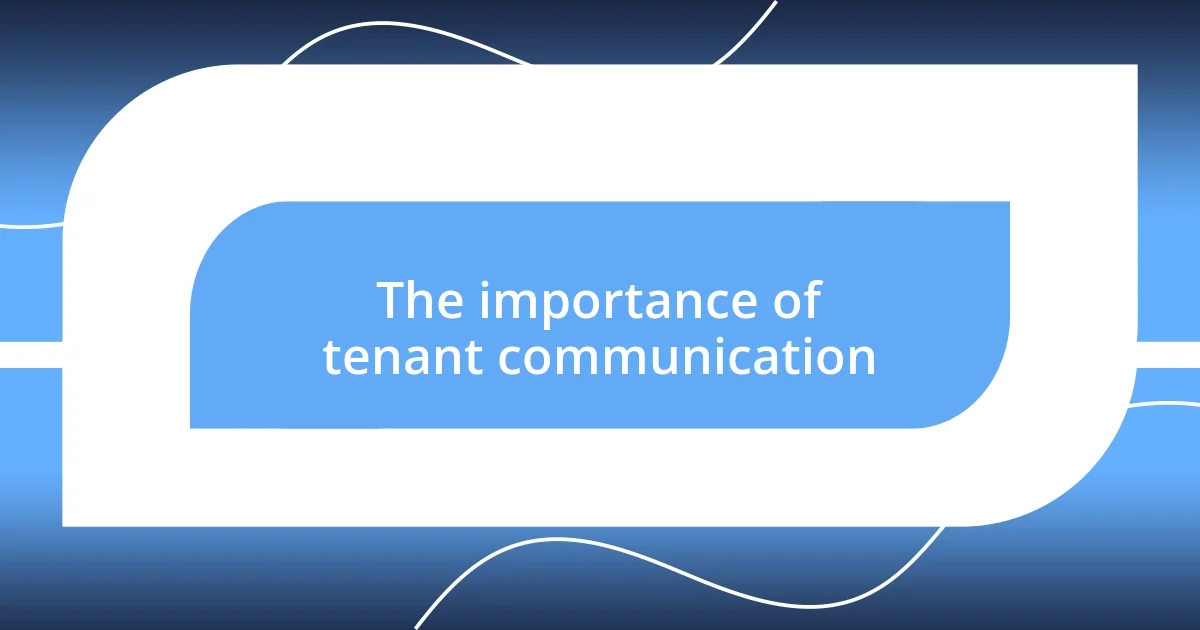
The importance of tenant communication
Effective tenant communication is crucial in fostering a positive relationship and ensuring a harmonious living environment. I remember when I first started managing properties; I underestimated how much a simple check-in could mean to tenants. Just asking, “How’s everything going on your end?” can open the door to vital feedback and helps tenants feel valued and heard.
Have you ever considered how problems often escalate in silence? I once encountered a tenant who hesitated to report a minor plumbing issue. By the time I was notified, the situation developed into a much larger problem that required extensive repairs. This experience taught me that maintaining open lines of communication can prevent small issues from exploding into significant crises, ultimately saving time and money for both parties.
Moreover, transparent communication lays the foundation for trust. I’ve had tenants share their concerns about rent increases or maintenance timing directly with me, rather than resorting to complaints online or to other tenants. This kind of dialogue not only builds trust but also allows for solutions that work for everyone involved. Wouldn’t you agree that feeling heard can transform a tenant’s experience from negative to positive?
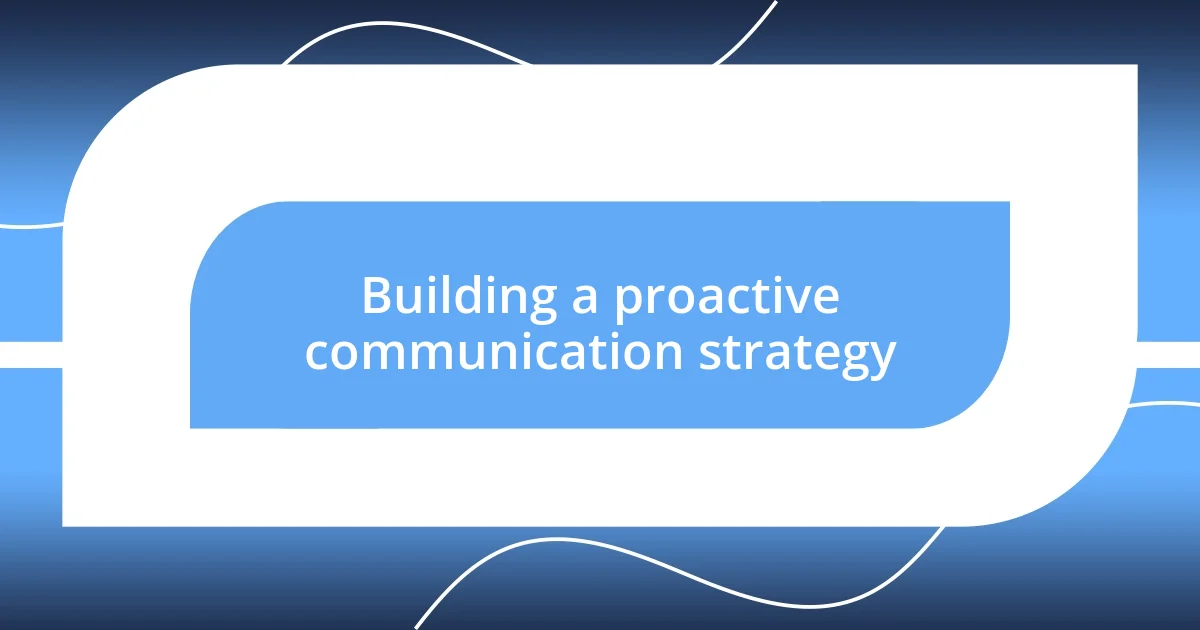
Building a proactive communication strategy
Developing a proactive communication strategy requires intentional planning and consistent efforts. In my experience, scheduling regular updates—such as monthly newsletters or check-in emails—can keep tenants informed and engaged. These communications act as gentle reminders that their voices matter. I remember creating a shared calendar for maintenance updates and events. It helped tenants know what to expect and when, which significantly reduced their anxiety.
An essential element of this strategy is actively seeking feedback. I often posed questions like, “What improvements would you like to see in the community?” This simple practice encouraged tenants to share their thoughts, making them feel valued and more likely to report any issues early on. Having this open invitation for feedback not only builds rapport but also helps me identify potential areas for improvement before they become a bigger concern.
Finally, I’ve found that personal touches can go a long way in enhancing communication efforts. Whether it’s a tailored birthday message or a quick text to check in on a new tenant, these gestures show that I genuinely care. For instance, I once followed up with a tenant who had undergone surgery, offering assistance and support. This not only solidified our relationship but also encouraged her to reach out when she needed help in the future.
| Strategy | Description |
|---|---|
| Regular Updates | Monthly newsletters and check-ins to keep tenants informed. |
| Seeking Feedback | Encouraging tenants to share their thoughts for improvements. |
| Personal Touches | Sending personalized messages or texts to strengthen relationships. |
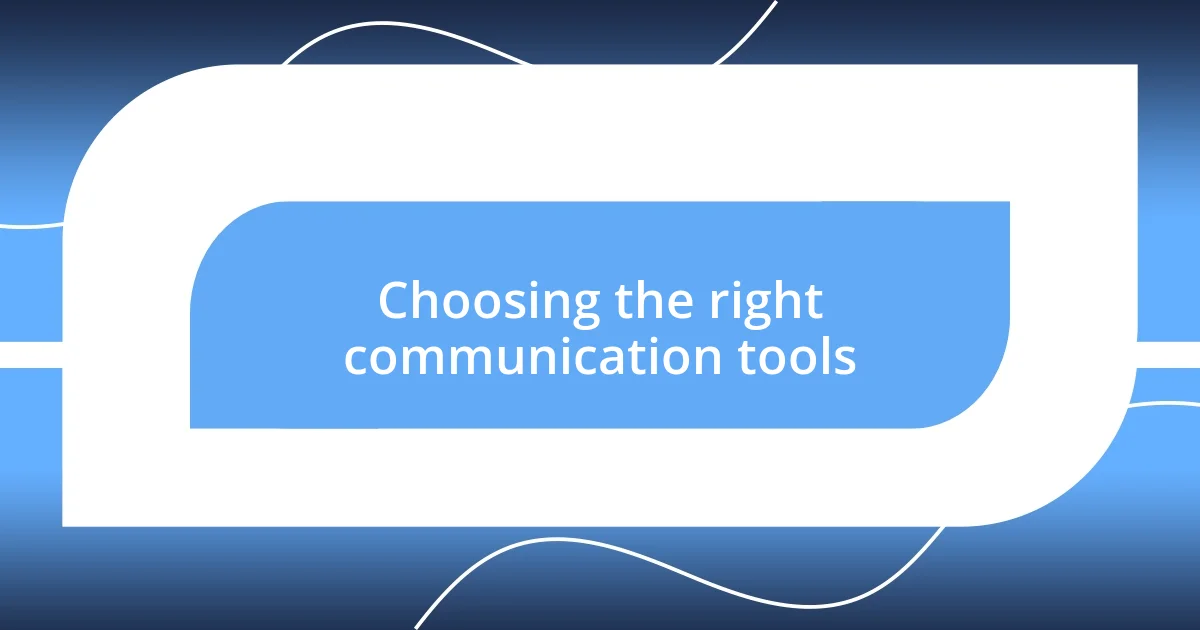
Choosing the right communication tools
Choosing the right communication tools can significantly enhance the tenant-landlord relationship. I’ve found that utilizing platforms that fit both my style and my tenants’ preferences plays a crucial role. For instance, while some tenants prefer quick text messaging for updates, others appreciate the formality of email. Being adaptable in my approach ensures I reach everyone effectively.
Here are a few tools I recommend based on my experiences:
- Email: Perfect for detailed information and official communication.
- Text Messaging: Ideal for quick updates or urgent matters.
- Property Management Software: Streamlines communication, maintenance requests, and billing in one place.
- Social Media Groups: Provides a community feel where tenants can connect and share experiences.
- Survey Tools: Gather feedback efficiently and understand tenant satisfaction.
I remember experimenting with a community group chat platform. At first, I was hesitant, thinking it might lead to chaos. However, it turned out to be a fantastic way for tenants to share experiences, ask for recommendations, or simply connect with one another. The sense of community fostered there reminded me how valuable the right tools can be in building that positive atmosphere I strive for.
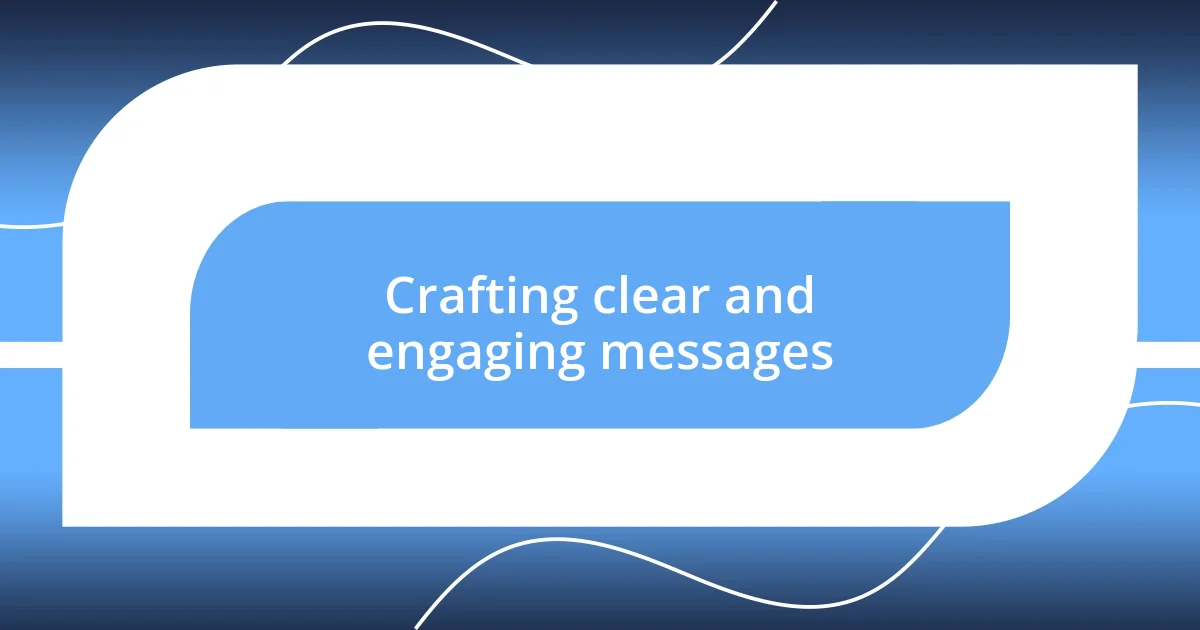
Crafting clear and engaging messages
Crafting clear and engaging messages is all about striking the right balance between professionalism and warmth. I’ve found that using concise language and breaking down complex information into digestible bits can make a significant difference. For example, when I needed to announce a rent increase, I was thoughtful about how I presented the details. Instead of merely stating the facts, I shared the rationale behind the decision, making it clear that it was a necessary step to maintain the property’s quality. This approach helped ease potential frustration and fostered understanding among tenants.
Another tactic I’ve used is storytelling. People connect with experiences, so when I send out reminders or updates, I often include brief anecdotes or examples from the community. For instance, I once shared a story about how we were able to create a lovely communal garden thanks to tenant suggestions. The response was overwhelmingly positive. It turned a simple announcement into something relatable and inspiring, making tenants feel part of a shared journey.
Finally, I encourage open dialogue by inviting tenants to respond to my messages. Sometimes, I’ll end an email with a question like, “What do you think about these changes?” It signals to tenants that their input matters. By sharing my own experiences—both good and bad—I’ve noticed how vulnerability breeds connection. It’s not just about the information but about building a community where everyone feels comfortable engaging with one another.
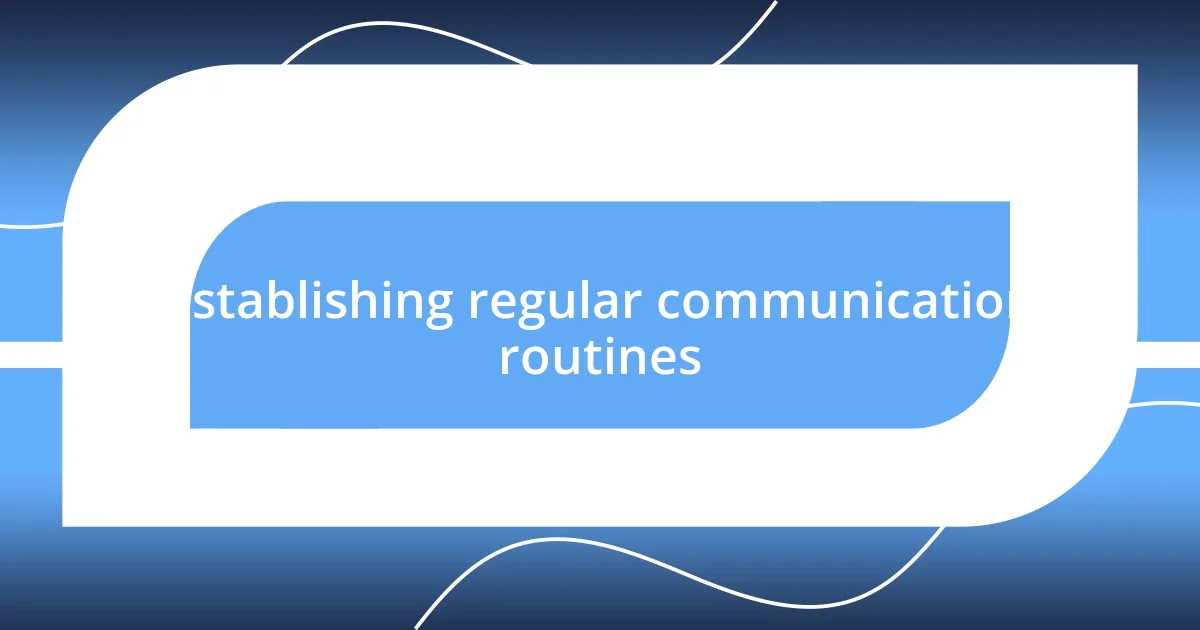
Establishing regular communication routines
Establishing regular communication routines is essential for fostering strong tenant relationships. In my experience, weekly check-ins through the preferred communication methods can make a world of difference. I remember when I initiated a simple Sunday evening message, providing updates on property maintenance or upcoming community events. The response was overwhelmingly positive; tenants started to look forward to this routine, which helped reinforce a sense of community.
In addition, I’ve learned the importance of consistency in communication. When I established a monthly newsletter, it wasn’t just about sharing news; it became a platform for tenants to voice their concerns and offer suggestions. How many times have you had a great idea but felt hesitant to share it? Creating a space where tenants feel their voices are heard lays the groundwork for trust. I have seen firsthand how this approach encouraged tenants to open up, sharing not only their ideas but also personal experiences that brought our community closer.
One effective strategy I adopted was scheduling annual tenant appreciation events. This not only helped to strengthen ties outside of formal communications but also opened up a casual dialogue about any lingering issues. I can recall one gathering where a tenant casually mentioned a recurring maintenance issue that hadn’t been formally reported. Opening those lines of communication in a relaxed setting made it much easier for them to speak up, and I was able to address it swiftly. Establishing routines like this fosters camaraderie and helps ensure that everyone feels included.
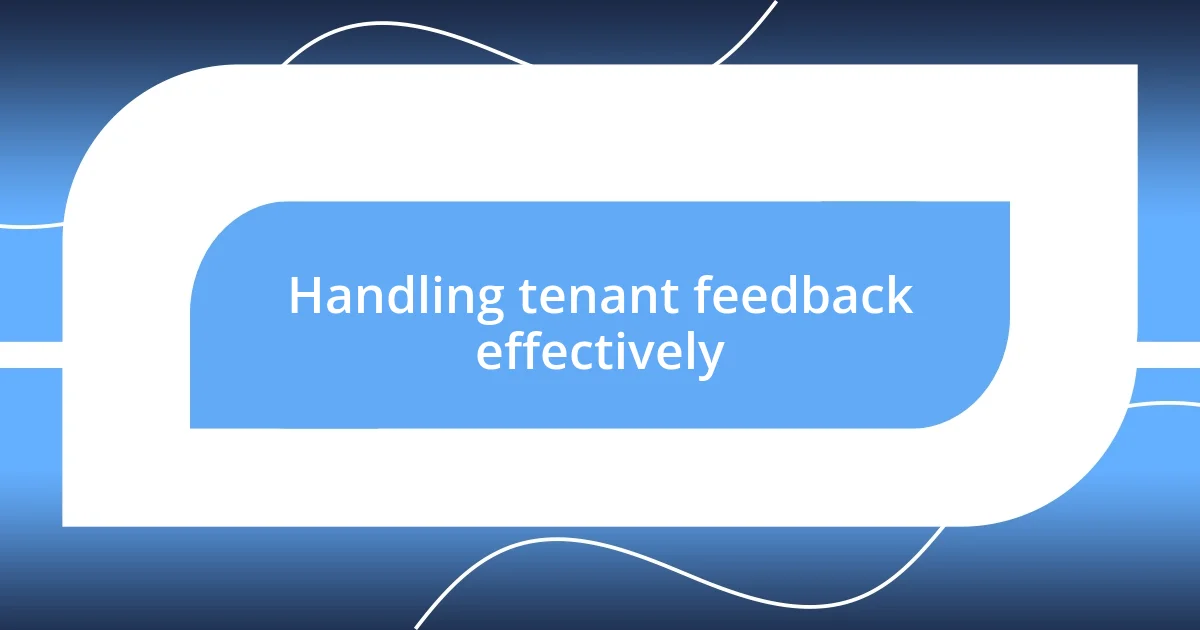
Handling tenant feedback effectively
One of the most rewarding experiences I’ve had with tenant feedback came when I invited suggestions for property improvements. You wouldn’t believe how enthusiastic everyone was to share their ideas! I created a simple online forum where tenants could voice feedback anonymously. Not only did this lead to fresh ideas—like adding a dog park—but it also made residents feel their opinions matter. Have you ever felt like your voice could influence change? That’s precisely the sentiment I wanted to evoke within our community.
When addressing feedback, I’ve found that sincerity goes a long way. One time, a tenant reached out about a plumbing issue that wasn’t getting resolved quickly. Rather than brushing it off, I called personally to listen to their concerns and reassure them I was on it. I realized that addressing not just the issue but the emotions behind it fostered a relationship built on trust. How often do we forget that behind each complaint is a human experience? Taking the time to truly engage can turn a frustration into genuine appreciation.
Ultimately, closing the loop on feedback is crucial. After implementing changes based on tenant suggestions, I make it a point to follow up. This can be as simple as a brief message saying, “Thanks to your feedback, we now have that dog park!” I’m always amazed at how this acknowledgment sparks further dialogue. It’s like planting seeds; when tenants see their ideas take root, they’re much more willing to come forward with new suggestions in the future. Isn’t it remarkable how a little recognition can cultivate a thriving community?
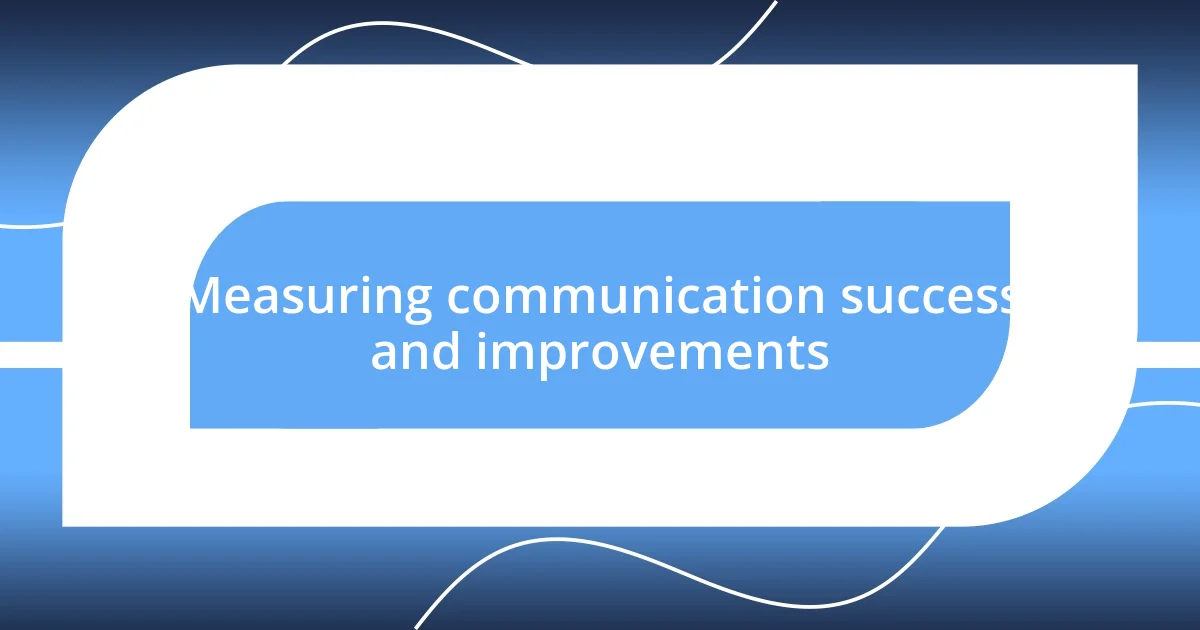
Measuring communication success and improvements
Measuring the success of tenant communication has always been enlightening for me. One straightforward method I employed was tracking response rates to my messages and newsletters. I remember analyzing the data one month and noticing a 75% engagement rate from tenants. That small statistic was more than just a number; it indicated that a significant portion of my community was not only receiving information but actively engaging with it. Have you ever felt that buzz of satisfaction when your efforts are reciprocated? That kind of feedback is invaluable.
Another effective approach I used involved regular surveys. I crafted simple questionnaires that asked tenants about their preferences for communication methods and overall satisfaction. The results often surprised me. For instance, one year, I discovered that many tenants preferred video updates rather than written formats. Adapting to that preference significantly improved our interaction levels. How often do we miss out on connecting simply because we don’t ask the right questions? I’ve learned that staying flexible and open to change can enhance the trust within the community.
Finally, I’ve gained insight into using informal check-ins as a success metric. During my casual coffee meet-ups with tenants, I’d observe their body language and hear their thoughts on our communication. It’s fascinating to see how these conversations could reveal underlying feelings about our engagement. More than once, I sensed a tenant hesitating when discussing repairs, which led me to reflect on how to improve transparency. That’s when I realized that measurement doesn’t just come from data; often, it’s those personal interactions that truly reveal the heart of communication success. Isn’t it amazing how the simplest conversations can unlock deeper insights?




